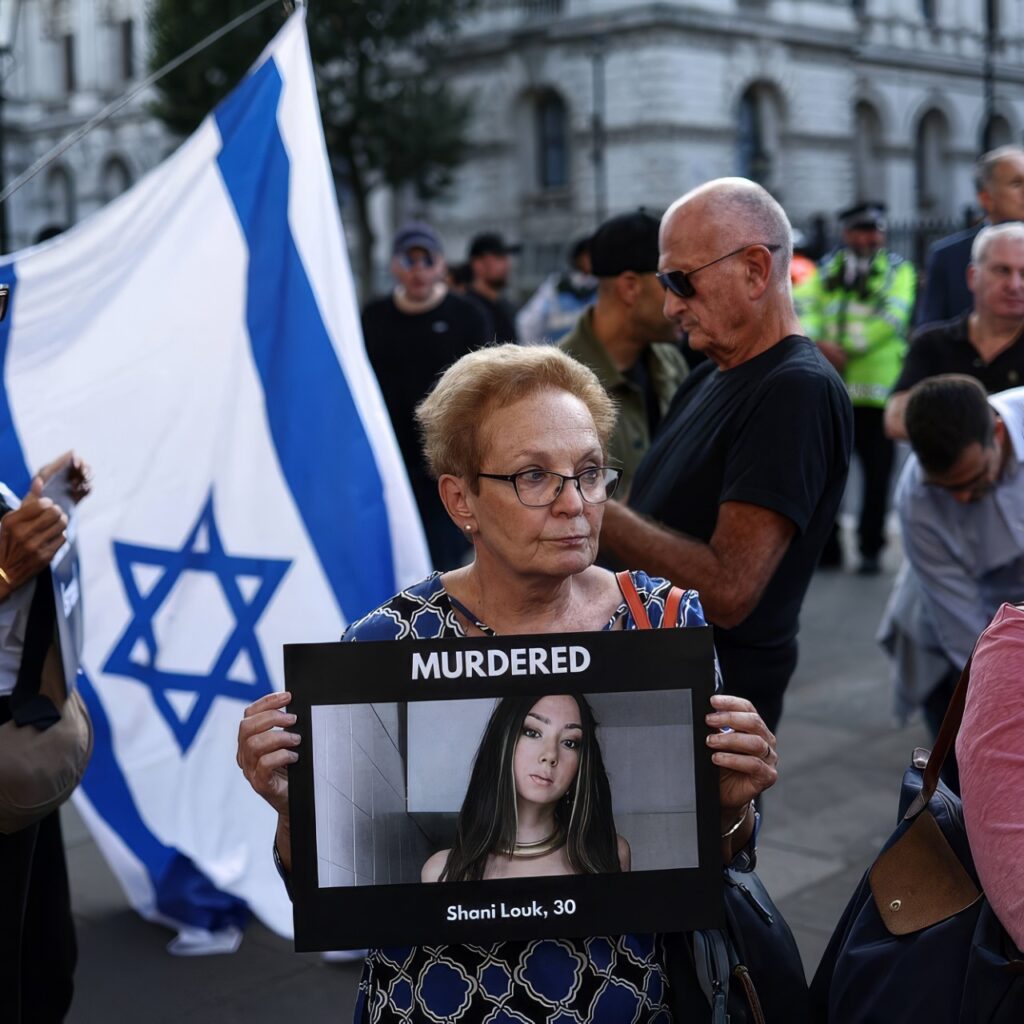Journalism that Glorifies Evil
By Silvia Cherem
Last month, the Reynolds Institute of Journalism at the University of Missouri granted its Photo of the Year award for the “Team Photographic Story of the Year” to what they called an iconic picture. It is the image taken by Ali Mahmud in the south of Israel on October 7, published by the Associated Press, in which, from “a privileged place” and closely following the white Mitsubishi double-cab pickup where the members of Hamas returned to Gaza with its trophy, managed to capture all the details of the proud terrorists carrying with them the half-naked corpse of the young Shani Louk.

Ali Mahmud was in the front row. He was so close to the Hamas members that he managed to capture their faces full of joy, fervor and adrenaline, as well as the Arabic license plate of the truck. He was able to capture the horror and drama of the jihadist patriarchy brutality, pausing on the four men euphoria who, sitting on top of Shani, rested their dirty legs over the head and limp body of the young woman. In their arms they held the source of their power: missiles and kalashnikovs. A fifth terrorist is hanging from the door of the truck; some others, including the driver, are inside. Their faces enjoy the glory of carrying their sexual object, their loot.
Mahmud managed to shock, to convey the necrophilia and the pornography of evil, and to make us understand the loneliness and humiliation of the body of that 22-year-old girl who made her last trip in the bed of a truck with her breasts and belly exposed on the iron floor; with her right leg hanging wide open; with her violated privacy barely covered with black underwear. Shani Louk was a young Israeli-German, married to Orión Hernández, a Mexican citizen kidnapped into Gaza. Later, part of Shani’s skull would be found in the vicinity of the Nova Festival headquarters. They beat her to death, God knows what they did with her. She was a victim like so many others of their sexual brutality. They were raped by the group, one after another until their pelvises were broken.
As documented in later videos, these criminals paraded Shani’s body through the streets of Gaza so that Gazan children and young people could spit and punch her to celebrate the massacre. Shani-mutilated. Shani Louk-corpse. Shani-hostage. Shani-thing. Shani-trophy.
An award is given to this iconic portrait of the savage pogrom at the hands of Islamic fanatism that gave rise to a war. It raises an ethical question.
No doubt the image defines the historical memory of an era, as did the photo of Kim – a naked girl in Vietnam, covered in napalm, who ran towards Nick Ut’s camera, crying in pain with her arms open. Due to that photograph, taken half a century ago during the Vietnam War and published on the cover of the New York Times, Nick Ut was given the Pulitzer Prize and the World Press Photo award. At the time there was controversy because the girl was naked, but it deserved every award as it showed an intense drama; and because that image generated political awareness and a moral sensitivity, it helped define the anti-war movement which was already developing prior to the war.
In addition, it is well known that after Nick Ut took the picture, he left the camera on the floor went to help Kim with water from his canteen, and took her unconscious in his agency’s van to a nearby hospital to be treated. . When they refused, he threatened to publish their malpractice and thus changed the girl’s life. Nick Ut did not go with the girl’s executioners; he came across the incident and showed it. Today, on the contrary, photojournalists not only don’t support the victims, but they go with the perpetrators. It has been proven that Mahmoud Ali participated and celebrated with the terrorists.
Honest Reporting reported last November that there were six photojournalists who entered Israel with the terrorists at 5 or 6 in the morning,: Hassan Eslaiah (CNN and AP), Yousef Masoud (AP and New York Times), Yasser Qudaih and Mohammed Fayq Abu Mostafa (Reuters), as well as Ali Mahmud and Hatem Alia (from AP). There is even an image of Hassan Eslaiah, a freelance correspondent for CNN and AP, being kissed by Ismail Haniyeh, who planned every detail of the horror and savagery with which Hamas attacked Israel on October 7.
They all documented and participated in the barbarism, stoically photographing that morning the scenes of maximum horror, when three thousand terrorists entered the kibbutzim of southern Israel to burn entire families alive, to rape, behead, massacre, torture, kidnap and murder more than 1,200 people who were taken out of beds and cribs in nightgowns and pajamas. Six months have passed and there are still 137 people kidnapped, including babies and women who continue to be targets of sexual crimes.
A perverse script, which in addition, journalism backed up with complicity, bias and lack of moral sense, because it would be impossible for them to know what was going to happen at 5 or 6 in the morning, without links to the Hamas group. And because we don’t know of a single journalist who said enough is enough, of any one who carried a child in his arms to protect him, like Nick Ut did.
Today they get rewarded for being part of, for having joined evil with their complicity. Therefore, I say it again, it is an ethical question because by rewarding that image without a clear complaint, they glorify terrorism. The message of praising the photographer with the first-place medal, elevates and sanctifies fanaticism and cruelty. By not siding with the victims, it honors and celebrates brutality. By allowing repressive attitudes against women, it goes even deeper into sexist and criminal teachings. By reproducing the fashionable chant against Israel, it denies the fact that the Islamic jihadists intended to wage a holy war against the infidels, it attacks the West freedom, decency and moral.

Every day, and at every moment, journalists make ethical decisions and have to report the truth in a responsible and independent way. A journalist who prides himself on being a decent person would not go with a rapist to see how he slaughters a woman in order to document scenes of horror and sadism, and I think even less would there be anyone to reward him for having left testimony of it. Gabriel García Márquez said it well: “Ethics is not an occasional condition, but must always join journalism like the buzzing of a botfly.” Much to think about…
Silvia Cherem, journalist and writer, is the winner of the 2005 National Journalism Award, former president of the International Women’s Forum in Mexico, and recipient of the 2022 Woman of the Year award.
This article was translated from the Spanish original by Sara Winkowski.
